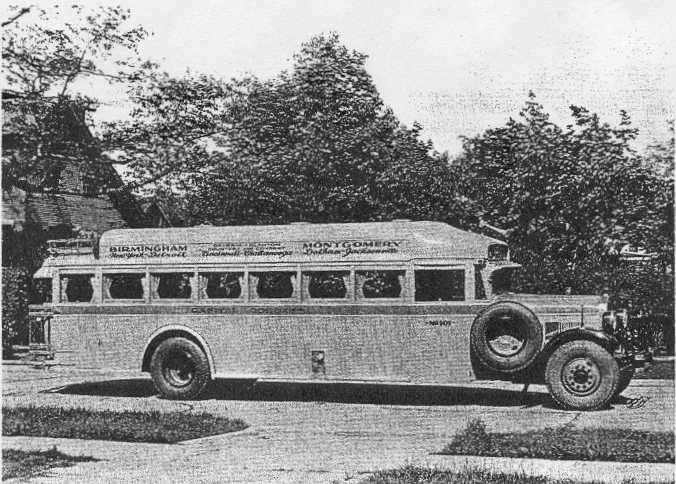
|
Capital Coaches 101 was the first model L and one of a very few 29-passenger commander of the Highways bodies to be built. This bus was delivered in June 1929 and had a White 54 chassis. |
Indian Names Although the official designations for its bus bodies were fairly simple ones, FitzJohn offered so many variations on the same themes that advertising and sales people devised fanciful names for them. Intercity operators, in particular, wanted rooftop luggage racks in some cases, or polished aluminum rear grillwork, and these relatively minor variations were given separate Indian names. Because most of FitzJohn's bodies were still being built for Reo chassis, it is possible that these names were applied only to complete Reo-FitzJohn buses. Some of the names were:
| Model B |
21-passenger city, without upper sash windows 21-passenger city, with upper sash windows |
Seneca Sioux |
| Model C |
17-passenger Observation Coach 25-passenger Observation Coach |
Mohawk Tecumseh |
| Model D |
12-passenger Utility Coach 14-passenger Utility Coach 17-passenger Utility Coach |
Algonquin Juniata Apache |
| Model G |
21-passenger Observation Coach, no inside lofts 21-passenger Observation Coach, with lofts |
Shiawassee Tomahawk |
| Model H | 29-passenger city | Pensacola |
| Model K | 5-passenger city | Navajo |
| Model L |
21-passenger Commander of the Highways 25-passenger Commander of the Highways 29-passenger Commander of the Highways |
Chippewa Shawnee Pocahontas |
| Model S | School buses of various sizes | Hiawatha |
Direct Sales to Customers Effective January 1, 1929, FitzJohn stopped selling bus bodies through chassis manufacturers and auto dealers and began selling directly to its customers. A sales office was established in Detroit, closer to the center of the motor vehicle business, with F.W. Feeney as its manager. But with the coming of the depression, FitzJohn had increasing difficulty holding its own. The company's best years as a body builder were behind it. In 1930, sales fell by 40 per cent, and on June 8, 1931, the company entered receivership.
During the subsequent reorganization, H.A. FitzJohn lost control of the FitzJohn company. For a time he teamed with Paul O. Dittmar of Harvey, Ill., in the design (and possibly construction) of the Dittmar-FitzJohn Autocoach. This was a 12 to 15-passenger deluxe parlor bus similar to the FitzJohn model D, but having a depressed aisle along the door side to provide the greatest possible headroom. Several Autocoaches
8